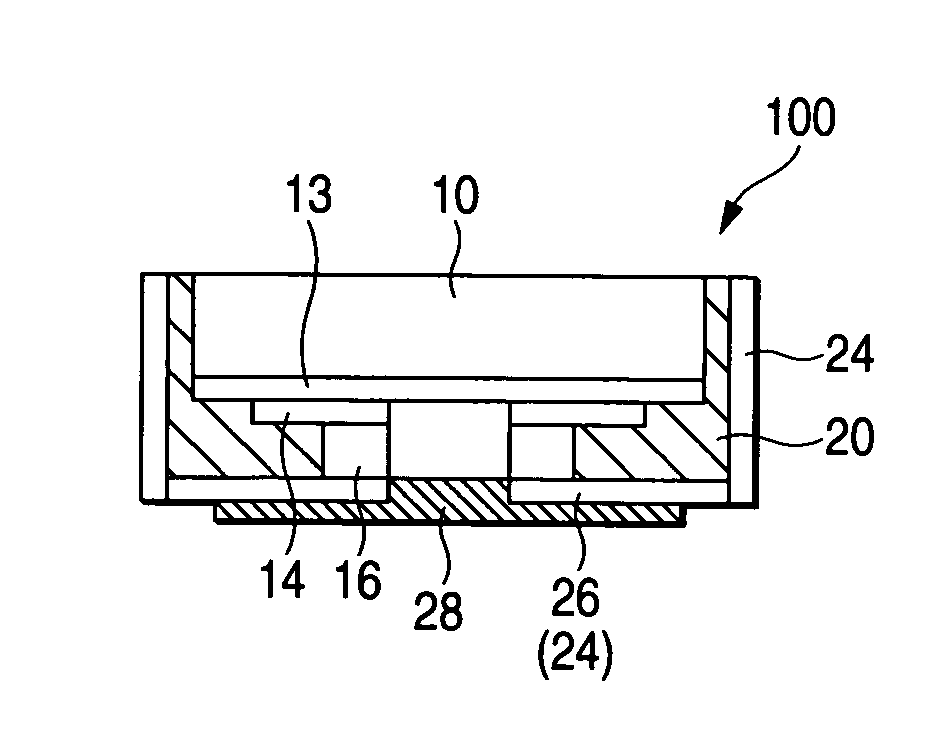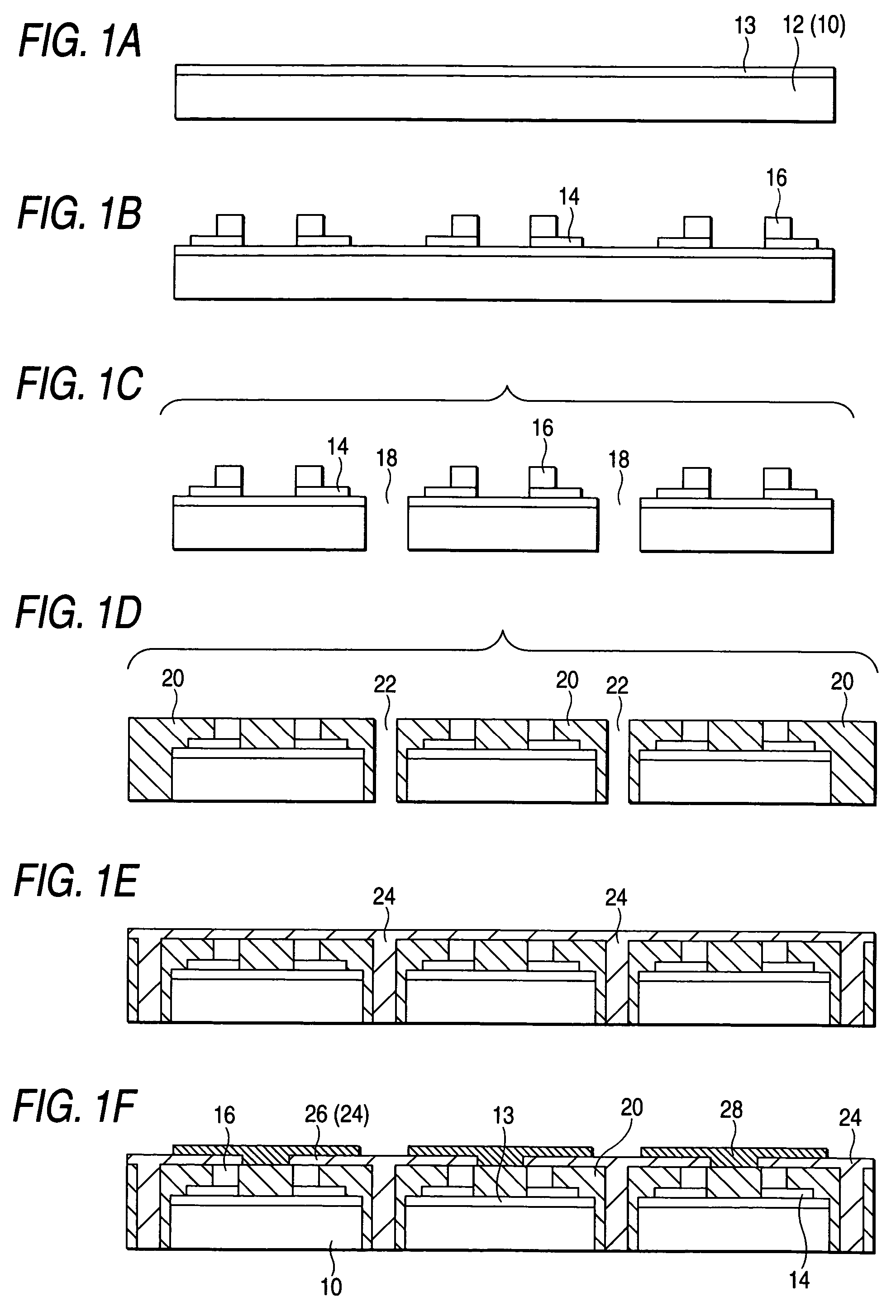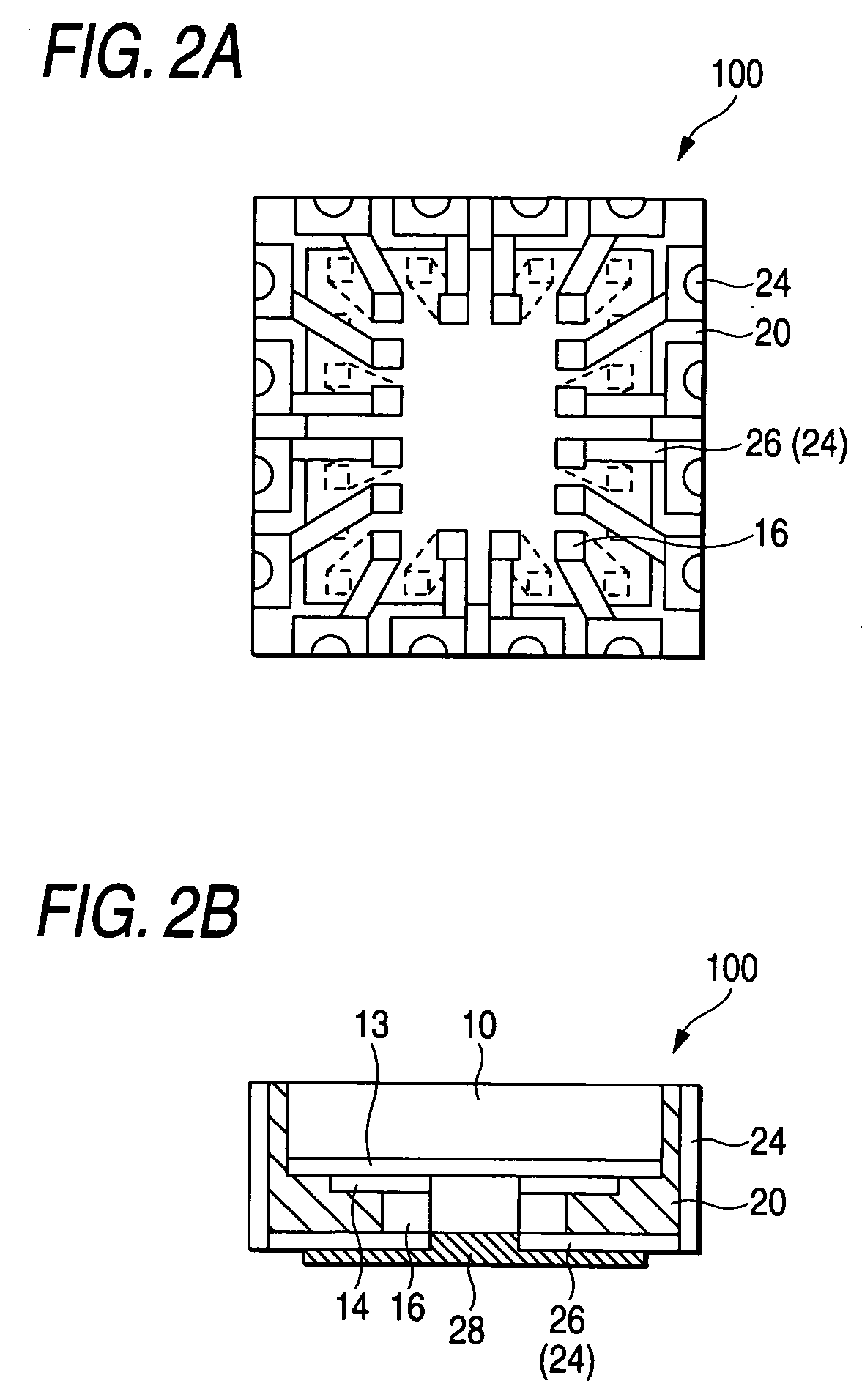Semiconductor device and method for fabricating semiconductor device
a semiconductor and semiconductor technology, applied in semiconductor devices, semiconductor/solid-state device details, electrical equipment, etc., can solve the problems of increasing costs, reducing the number of chips to be obtained, and shortening the distance between the terminals, so as to achieve the effect of increasing costs
- Summary
- Abstract
- Description
- Claims
- Application Information
AI Technical Summary
Benefits of technology
Problems solved by technology
Method used
Image
Examples
first embodiment
[0054]FIGS. 1A to 1F are process diagrams for illustrating a method for fabricating a semiconductor device in a first embodiment. FIGS. 2A and 2B are schematic block diagrams depicting the semiconductor device in the first embodiment; 2A is a plan view and 2B is a partial cross section.
[0055]A semiconductor device 100 in the first embodiment is configured in which an insulating material 20 is formed on the side of a semiconductor chip 10 and a conductive layer 24 (conductive pattern) and an interconnect 26 (conductive pattern) are formed to extend from the top of the front side of the insulating material 20 to posts 16 of the semiconductor chip 10. Furthermore, the semiconductor chip 10 is configured to include an insulating film 13 for protecting integrated circuits formed on the front side thereof, electrodes (electrode pads, not shown) electrically connected to the integrated circuits, a redistribution wiring layer 14 as abase for forming wiring routed from the electrodes and the...
second embodiment
[0068]FIG. 4 is a partial cross section depicting a semiconductor device in a second embodiment.
[0069]The second embodiment is the form that the semiconductor devices 100 in the first embodiment are stacked. In the embodiment, one ends of the conductive layers 24 formed on the sides of the semiconductor chips 10 are joined to each other through connecting members 30 such as solder to stack two semiconductor devices 100.
[0070]In the embodiment, since one end of the conductive layer 24 is used as a terminal, the pitch between the terminals can be set wider than that of traditional ones as described above. Therefore, connection failure is hard to occur, and highly reliable three-dimensional packaging (stack mounting) is feasible. For example, the embodiment can be utilized effectively to increase processing capacity in semiconductor devices such as memories.
third embodiment
[0071]FIG. 5 is a partial cross section depicting a semiconductor device in a third embodiment.
[0072]The third embodiment is the form that the semiconductor devices 100 in the first embodiment are stacked. In the embodiment, bar-shaped connecting materials 32 are attached to the conductive layers 24 formed on the sides of the semiconductor chips 10 with the connecting member 30 such as solder, and three semiconductor devices 100 are stacked through the bar-shaped connecting materials 32. In addition, a solder ball 36 is formed at the tip end of the bar-shaped connecting material 32 as a connecting terminal. The stacked semiconductor devices are mounted on a wiring board through the solder balls 36.
[0073]In the embodiment, connection failure is hard to occur, and highly reliable three-dimensional packaging (stack mounting) is feasible as similar to the second embodiment.
[0074]Furthermore, in the embodiment, many semiconductor devices 100 can stably undergo three-dimensional packaging...
PUM
 Login to View More
Login to View More Abstract
Description
Claims
Application Information
 Login to View More
Login to View More - R&D
- Intellectual Property
- Life Sciences
- Materials
- Tech Scout
- Unparalleled Data Quality
- Higher Quality Content
- 60% Fewer Hallucinations
Browse by: Latest US Patents, China's latest patents, Technical Efficacy Thesaurus, Application Domain, Technology Topic, Popular Technical Reports.
© 2025 PatSnap. All rights reserved.Legal|Privacy policy|Modern Slavery Act Transparency Statement|Sitemap|About US| Contact US: help@patsnap.com



